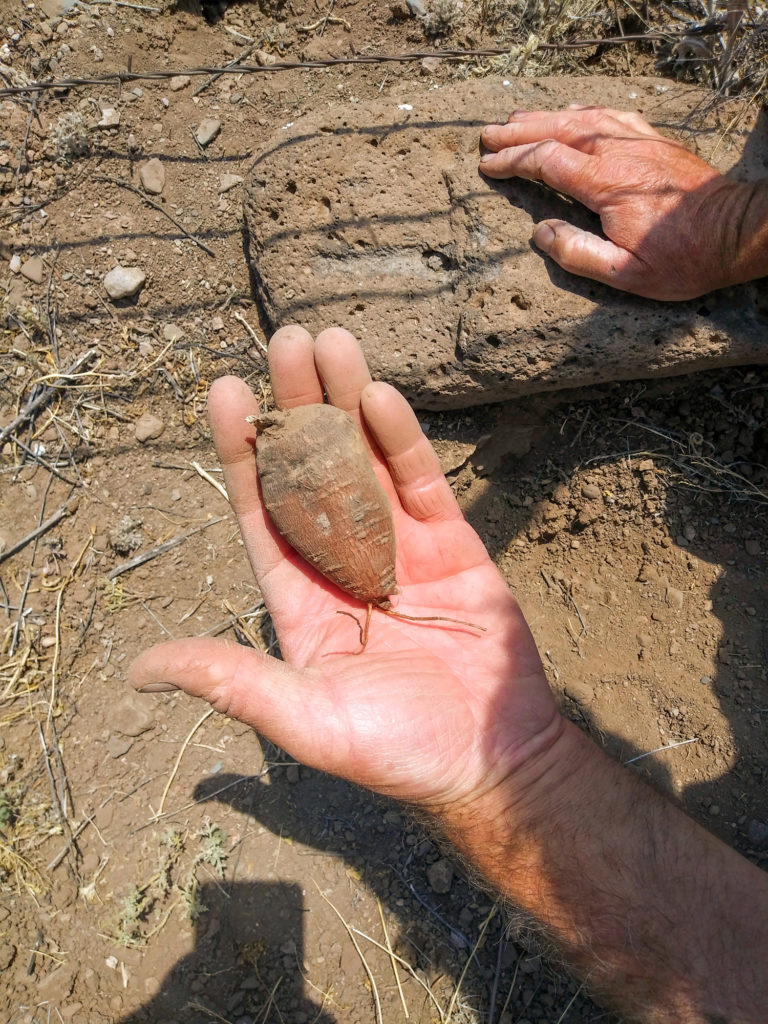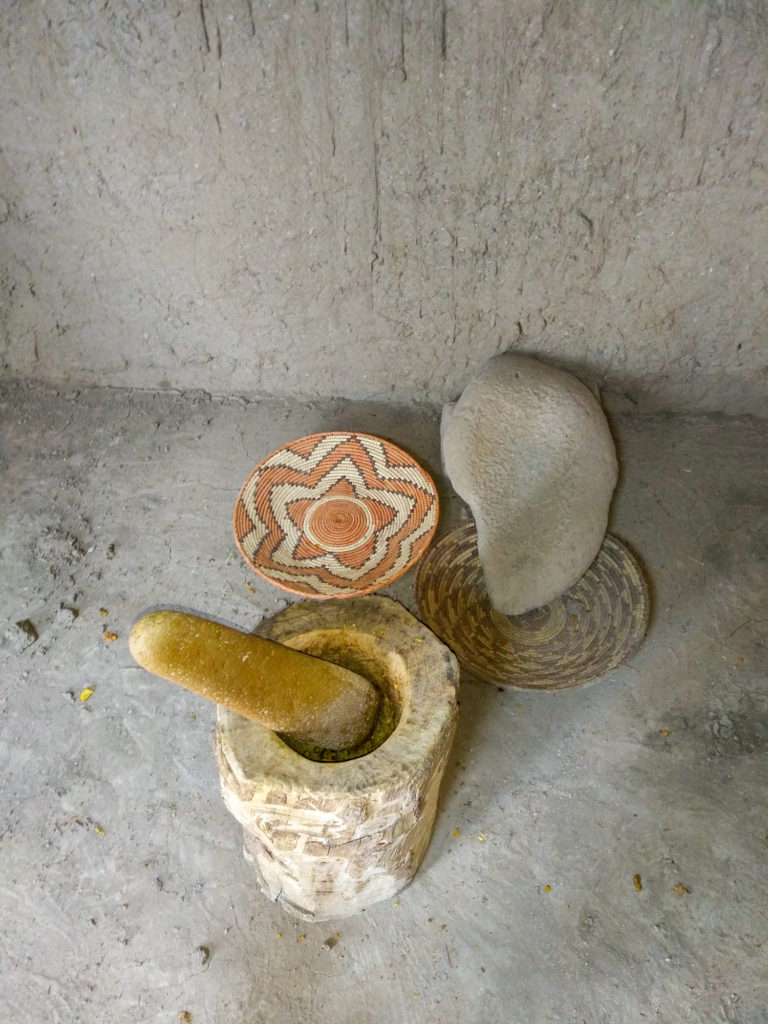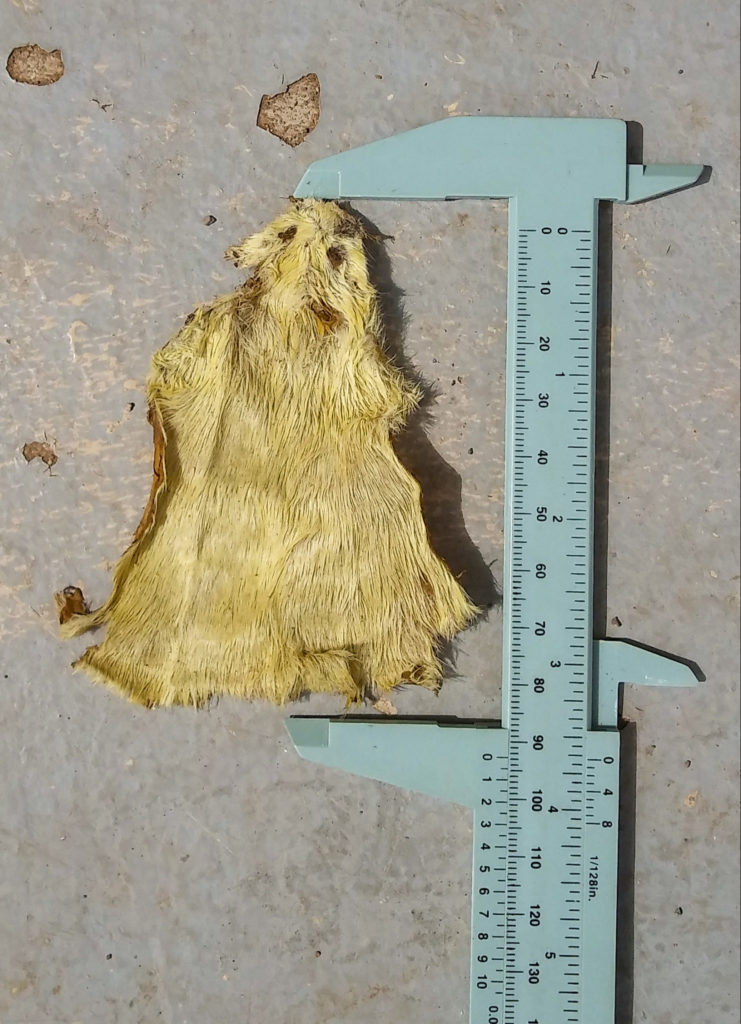- Home
- >
- Preservation Archaeology Blog
- >
- Hide and Squeak
(July 10, 2019)—Something I appreciate about my field school group and instructors is their willingness to try new things and let things happen. One experience like this was tanning mouse hides with Allen and my fellow student Sarah. Allen has tanned a few hides before, but Sarah and I were the first field school students to ever try it in field school history. Some parts of the process were new territory even for Allen! I was happy to be involved even though I had never done anything like this and did not know what to expect.
In the Southwest, mouse hides would not have been common, if anyone made them at all. That is because the yield of hide is small. Other animals’ hides would have more desirable, especially when those creatures were also a food source, such as big game or rabbits. Mice were a better choice for us, though, because the time and effort needed to acquire and process them is far less than what is required for larger animals.
Before skinning the mice, the first step we took was pounding wild rhubarb root Allen had foraged in a wooden mortar and stone pestle down to a mulch-like consistency. The mortar and pestle we used is based off of what people used in the Early Agricultural period. Wear patterns on stone pestles in the archaeological record indicate they were used with wooden mortars, even though the wooden mortars do not preserve well or at all. Wooden mortars absorb shock, making them a good tool to use with a heavy stone pestle.


Over a fire, we boiled the wild rhubarb root in water to make a turmeric-colored “tea” to soak our mice hides. The wild rhubarb is high in tannin, which helps break down and preserve the skin tissue by changing the way the tissue behaves. Raw hide will shrink up and dry out before decomposing when it is not treated at all, but the high-tannin soak keeps the fibers from re-bonding so the hide stays flexible and dries well, and so that it does not decompose the way raw hide would.
The mice we used were purchased frozen and are meant to be used as food for pet snakes. I was a bit surprised but relieved that we were able to use nail-clipping scissors and X-Acto knives to skin the mice, despite Allen’s preference for stone tools. I skinned the mouse by making an initial incision at the base of the tail, then continuing the line up the back of both legs. Then, I cut a vertical line up the ventral side of the mouse towards the head. I stopped around the base of the mouse’s head and detached the skin from the mouse by pulling it up and over the mouse’s head.
Directly after skinning the mouse we soaked the hides in the “tea” for two days and two nights. When we took them out, I rinsed them in the San Francisco River and dried them on a log while we carried out other fun activities. Periodically, we stretched and worked the hides and insure they didn’t shrink or curl up. (I tore my hide in a couple places but it did not upset me.) In the evening after drying, I rubbed chaparral oil into the skin side of my hide and Allen’s. The oil is the final step to seal and help preserve the hide.

Even though we know people in the Southwest were using animal hides for thousands of years, the hides don’t preserve well—if at all—in the archaeological record because hides decompose over time, especially when exposed to the elements. Now that I know what it might entail to process a hide (even if it varies from what I have done), participating in the process opened my mind to help recognize the types of artifacts associated with processing and using hides I might come across, such as certain stone tools, bone awls, or large pots. On top of that, in a small way I was able to experience something people from around the world did and continue to do.
Explore the News
Related to This
-
Project Hands-On Archaeology